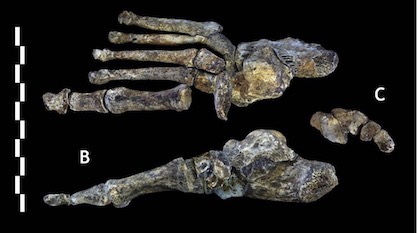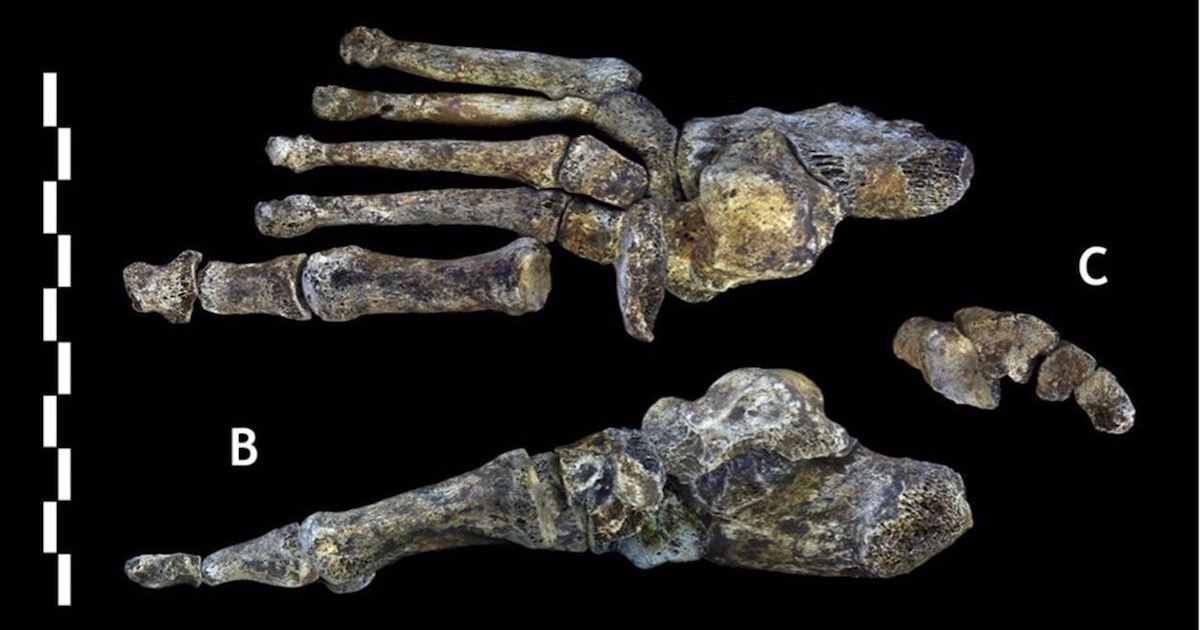 Human Origins
Human Origins
 Intelligent Design
Intelligent Design
Studying Homo naledi Fossils, Paleoanthropologists Apply ID Principles


Intelligent design (ID) theorists have been saying this for years: researchers in a range of scientific fields routinely, if unwittingly, use ID reasoning in their work. How so? These scientists seek to detect design in what they discover in nature. In doing so, they use methods very similar, if not identical, to those used by the ID movement. The most recent example comes from paleoanthropologists investigating the assemblages of fossils of Homo naledi in the Rising Star Cave in South Africa, and also at the Sima de los Huesos fossil hominin site in Spain.
Standard ID reasoning looks at known examples of designed, or non-designed systems. It then compares new datasets to determine whether they best match those known designed or non-designed patterns. If they appear more similar to a designed pattern, then ID researchers infer that the best explanation is design. If not, then material causes are the better explanation.
This is precisely what you’ll find in a new paper in Proceedings of the National Academy of Sciences. They took data from hominin fossil sites, some of which are known to be ancient human burial sites, and some of which were hominin bones that were not intentionally buried. They then wrote a computer program to assess whether a new dataset better matched intentional or non-intentional burial. The technical paper explains their methods:
Machine learning is an increasingly popular set of methods that permits computers to identify patterns within complex, multivariate datasets with statistical “learning” algorithms. Here, we employ a machine-learning approach that compares hominin skeletal part representation in the SH and DC assemblages to 14 modern and prehistoric accumulations of modern human, archaic human, australopith, and nonhuman primate skeletal remains.
In other words, using known examples of designed corpse arrangements and non-designed corpse arrangements, they programmed a computer to recognize whether a collection of corpses was best explained by burial (design) or chance (non-design). DC (for Dinaledi Chamber) is the Rising Star Cave were Homo naledi fossils were found in 2015, and SH is the Sima de los Huesos site in Spain where other early Homo fossils were found. Ars Technica has a nice explanation of the study:
But it’s hard to objectively determine what’s a deliberate burial and what’s an accidental collection of bones. Now, scientists have attempted to hand off the task to an impartial judge: a machine-learning algorithm. Its analysis indicates that possible signs of burial in other hominins are more likely to be the result of chance.
[…]
Egeland and his colleagues decided to let a computer try to tell, based on the particular bones found at each site. The team fed information on some possible early hominin burials to a machine-learning algorithm — a program that lets a computer “learn” to identify patterns in complex sets of data using statistical rules — along with data from several other sites where they knew what fate had befallen the bones. Those sites included prehistoric human burials, undisturbed modern corpses, places where prehistoric bones had accumulated naturally, modern human corpses scavenged by wildlife, modern baboons eaten by leopards, and modern baboons that had died of natural causes in a cave.
So regarding Homo naledi and the hominins from Spain, what does the research conclude? Did they intentionally bury their dead, or did blind material causes (i.e., “chance”) bring the long-dead fossils to their final resting place?
The discoverers of Homo naledi have argued that it intentionally buried its dead, showing the early emergence of human-like behavior. But this new paper in PNAS finds that the location of the Homo naledi fossils in the Rising Star Cave (and the Spanish hominin fossils) are better explained by the action of predators than by intentional burial:
These methods also consistently cluster the SH and DC assemblages with the remains of scavenged human corpses, leopard-consumed baboons, and baboons that died naturally within a cave. … In other words, the skeletal element abundance data suggest that the SH corpses did not find their way into the cave chamber as complete skeletons and/or that they experienced a substantial level of disturbance after their deposition. While other taphonomic factors may have been at play, we consider the feeding activities of carnivores to be a likely source of this disturbance.
Ars Technica puts it this way:
The bones that made the difference seemed to be the bones of the hand and wrist (phalanges, metacarpals, and carpals), the lower arm (radius and ulna), ankles (tarsals), and parts of the leg (femur and fibula, but oddly not the tibia). Egeland and his colleagues say that’s probably because these bones are more appealing and accessible to predators, because they’re either small — like the hand bones and tarsals — or not too dense to break easily with teeth and jaws.
The algorithm apparently thought the fossil collections from Sima de los Huesos and Dinaledi Chamber looked more like scavenged or naturally accumulated remains than like deliberate burials.
The authors of the technical paper are quick to point out that they have not absolutely refuted the possibility of deliberate burial. After all, the bodies may have been deliberately buried and then sometime later disturbed by predators. However, they also argue that intentional burial has not been established by the available data, meaning “it is premature to assert that SH and DC shed particular light on the development of the ‘human condition.’” Here’s their conclusion:
We stress that the results presented here do not refute outright a hominin origin for the SH and DC assemblages, but we do contend that the data also support partially or completely nonanthropogenic formational histories. … In light of these results and considerations, we argue that neither the SH nor DC currently qualifies as unequivocal evidence for emergent mortality salience in the human lineage.
This fascinating study not only counters arguments that Homo naledi was beginning to develop a human-like intellect, but it also shows that ID reasoning can be applied to address just these kinds of questions. In the present case, a design inference was rejected. Of course the authors do not seem to recognize it, but ID reasoning was fundamental to their investigation.
Photo: Foot of Homo naledi, by Lee Roger Berger research team [CC BY 4.0], via Wikimedia Commons.
